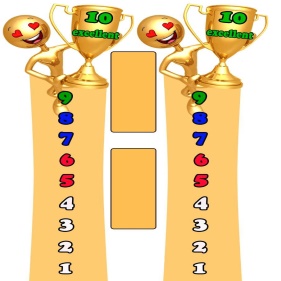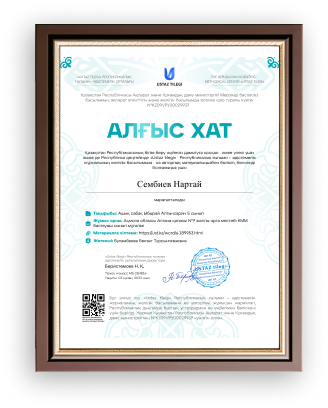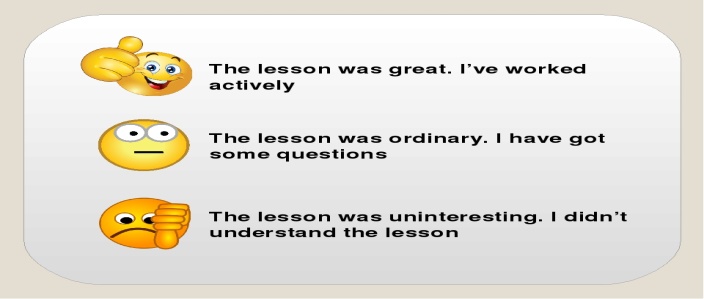|
Beginning of the
lesson
Warming-up

3
min.
Pre-learning
«Brainstorming»
method
7 min.
|
Organization moment
:
1.Greeting.
Ask about the
weather.
The teacher sets the
lesson objectives, letting students know what to anticipate from
the lesson.
Warming
up
Where are you
from?
How old are
you?
What color is
it?
How many students
are there in class?
What day of the week
today?
Lead –
In

|
The aim: To
develop pupils speaking skills and create friendly
atmosphere
Efficiency: By
wishing each other they feel better and feel the support of
others
Students of the class are
listed.
Students' attention is drawn to the
lesson.
Students say different words from the
picture
•Learners remember
previous lesson
vocabulary
•Learners answer the
questions
|
The
teacher to assess learners for their
ability.
“Good job!
Well done!”
Formative
Assessment

Good
job!
Assessment
criteria
make basic
statements related to personal information,
match places to
continents
|
Pictures
worksheet
Picture
|
|
Middle of the
lesson
Presentation
part.
30
min
|
Ex:1
P:87
•Draw Ss' attention to the street map and the
names of the shops in it.
Play the recording. Ss listen and repeat chorally
eat chora or individually. Ask various Ss to give the L1
equivalents.
(Ss' own answers)
Elicit what sort of things we can buy/do in each
shop and then ask various Ss around the class to say one thing for
each shop. Encourage Ss to say different things and continue until
all ideas have been exhausted.
Ex: 2 P:
87
• Revise prepositions of place with Ss and explain/
elicit the meanings of the ones presented through translation into
Ss' L1 or by demonstrating them with objects in the
classroom.
Explain the task and read out the example. Then,
Ss ask and answer in pairs. Monitor the activity around the class
and then ask some pairs to ask and answer in front of the
class.
Conclusion during the lesson some tasks
differentiated by outcomes of the students and by their
abilities.
|
• Learners listen and repeat.
Answer the question. Name one thing you can buy/do in each
shop.
ANSWERS
You can buy bread at a
bakery.
You can buy flowers at a
florist's.
You can buy stamps at a post
office.
You can buy foreign currency
at a bank.
You can buy trousers at a
clothes shop.
You can buy football shoes at
a sports shop.
You can buy glasses at an
optician's.
You can buy books at a
bookshop.
You can buy magazines at a
newsagent's.
You can buy musical
instruments at a music
shop.
You can buy food at a
supermarket.
You can buy a (gold) ring at a
jeweller's.
• Learners use these prepositions to ask for and
give directions, as in the example.
ANSWERS
A:
Excuse me. Where is the clothes
shop?
B:
It's on Apple Street next to the
jeweller's.
A:
Excuse me. Where is the
optician's?
B:
It's on Milton Street in front of the sports
shop.
A:
Excuse me. Where is the
newsagent's?
B:
It's on Apple Street behind the music
shop.
A:
Excuse me. Where is the music
shop?
B:
It's on Apple Street between the supermarket and the
newsagent's.
Excuse me. Where's the
bank?
B:
It's on AFT Harper Street opposite the jeweller's. etc
.
|
Descriptor:
- listen and
repeat.
- answer the
question
Total: 2 point
 Self
assessment Self
assessment
Differentiation: «Verbal support» method is used to help Ss use new words in the
sentences.
Descriptor:
- use
these prepositions
-
ask and answer in pairs
Total: 6 point
-Make CCQ questions Yes /
No
|

Card
Worksheet
Students
book
|
























